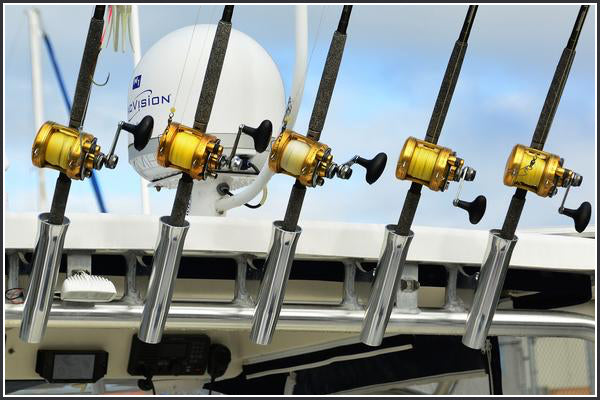We take knot-tying seriously at TYEPRO but we realize that our tool can only go so far in making sure that your knots are strong and effective. Just like a pie, an award-winning recipe can only be as good as the apples that get packed into the crust. Even the world’s best knot-tyer can only do so much with fishing line that’s been damaged prior to use.
This is why proper rod maintenance is important to us, and it should be for you as well. Few fishing enthusiasts are patient enough to stay put for an entire day of fishing; when one locale is “used up,” we’re likely to fire up the motor and cruise to another, or maybe just walk 200 yards down the riverbank.
Hooks are tough to remove from a line and retie so, being human, we find easier ways. Many anglers will hook their lures—already tied on the line—to various places on their rod in order to prevent them from getting tangled on anything such as clothing, other equipment or (worst of all) skin. This is a reasonable strategy, however it’s important to make sure that hooking your lure doesn’t cause harm by ultimately damaging your line, reel or rod.
 The biggest risk is that you will damage your line guides by cracking or scratching them. The consequence is at least a reduction in your casting distance, but nicking your line or needing to replace the rod due to lost guides is also a possibility.
The biggest risk is that you will damage your line guides by cracking or scratching them. The consequence is at least a reduction in your casting distance, but nicking your line or needing to replace the rod due to lost guides is also a possibility.
Another common (and bad) habit is to hook the lure to the closed bail or another part of a reel during transport. Although less likely, the trip—whether it involves riding the waves on a choppy lake or riding a bumpy road home—could result in damage to your reel, lure or line, resulting from these hard components bouncing off of each other. Even the slightest nick in the bail or spool can have an adverse impact on the fishing line that comes in contact with them.
Nicks and scratches on your equipment are even more relevant when considering the next common faux pas: reeling your lures into the top guide. Rather than hook the lure to anything, some anglers will simply reel the line in as far as possible, stopping when the lure collides with the guide. This might not sound as violent as a car accident, but it might as well be for your rod. Lures can easily take chips out of your guide or knock the ceramic insert completely out of the wire housing.

This variety of damage has become even more prevalent in recent years, as a result of tungsten lures. This is a much harder material than conventional lead and damages guides accordingly.
The good news is that many new rods come with a built-on metal loop, designed specifically for holding your hook and lure without damaging the rest of the rod. If your rod doesn’t come with such an addition, you can also purchase attachments designed to hold a hook during transport.



1 thought on “Save Your Line: Be Smart when You Transport Your Gear”
Jerry
I like my wife’s scrunchie